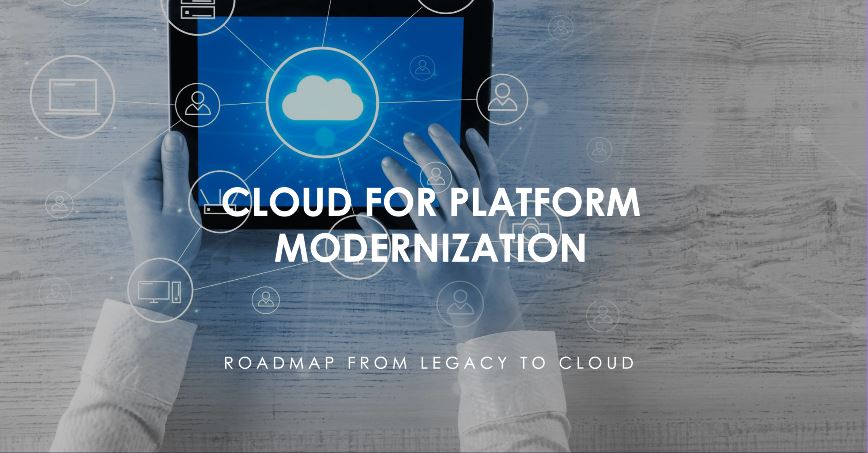Platform modernization is the strategic process of revamping an organization’s legacy data systems by transitioning to more modern, agile architectures capable of accommodating evolving business requirements. The primary objective of platform modernization is to enhance data accessibility, functionality, and usability while concurrently reducing the complexity and cost associated with managing vast amounts of data. This transformation entails a comprehensive reevaluation of data storage, collection, processing, and analysis, leveraging new technologies and tools that enable faster, more efficient data processing, storage, and analysis. In essence, platform modernization is a pivotal endeavor for organizations aspiring to extract maximum value from their data, maintain competitiveness within their industry, and deliver enhanced customer experiences.
Significance of a roadmap in Application Modernization
The success of any modernization initiative heavily relies on an effective application modernization roadmap. The importance of this roadmap is multifaceted, encompassing:
• Guiding Transformation: The roadmap offers a clear direction, helping stakeholders comprehend the what, why, and how of modernization.
• Facilitating Decision-Making: By providing comprehensive insights into the current state and future goals, the roadmap aids in informed decision-making, choice of appropriate approaches, and prioritization of efforts.
• Managing Complexity: App modernization is a multifaceted and intricate process. The roadmap assists in simplifying this complexity by breaking it into manageable segments, defining clear responsibilities, and setting achievable objectives.
• Risk Mitigation: By identifying potential obstacles, hazards, and dependencies early in the process, the roadmap allows for proactive risk management, reducing uncertainties and preventing surprises.
A Step-by-Step Guide to Legacy App Modernization Roadmap
Step 1: Evaluate Your Legacy System
Initiate the transformation process with a thorough assessment of your current state. Examine your legacy application, scrutinizing its characteristics, processes, benefits, core functionalities, and elements you wish to retain or replicate in the new application. Understand the connections between the existing system and other tools and applications used within your organization.
Consider that you and your team may be accustomed to the current solution and have developed workarounds to address its limitations. To gain a more objective analysis, it may be beneficial to have your legacy application assessed by a specialized business with expertise in system modernization.
Step 2: Start from the Ground Up
If you have the means and the knowledge, building your roadmap from the ground up is an ideal choice. Ask yourself, “How can legacy transformation modernization be executed more expeditiously?” Modern Operations (ModOps), based on DevOps principles, is a highly effective approach for modernizing legacy code. It emphasizes agility, which is critical for keeping pace with rapid technological advancements and facilitates ongoing adjustments and frequent deployments.
Step 3: Create a Unified Product Vision
In today’s digital landscape, the possibilities for customizing digital products are nearly limitless. Establish a clear, unified product vision, encompassing how the application should look, its intended functions, its role within your overall growth strategy, and which features are essential to your organization. This vision guides the development team in delivering a product tailored to your company’s needs.
Step 4: Choose the Application Modernization Approach
At this stage of your legacy app modernization plan, you have a solid understanding of your current system’s challenges and constraints, as well as the goals you intend to achieve. This knowledge makes it easier to select the appropriate modernization approach outlined earlier. Consider factors such as budget and the extent of changes required. If minor adjustments are sufficient, opt for less disruptive methods like Retaining/Encapsulation, Rehosting, or Replatforming. If a comprehensive approach is necessary, explore options such as Refactoring, Rearchitecture, Rebuilding, or Replacement.
Step 5: Set a Timeline
A strategy without a timeline is merely a collection of ideas. Develop a well-structured legacy app modernization timeline that takes into account both short-term and long-term organizational goals. Modernization is most effective during periods of relative stability, so avoid undertaking it during the middle of a major project. Instead, plan it for times when your organization is ready to expand, merge with another entity, or grow its workforce. Allow for potential delays, as an agile development process may entail numerous iterations and adjustments.
Step 6: Write a Risk Management Plan
While a well-designed approach reduces the likelihood of errors, unforeseen challenges can arise. It’s essential to be prepared for such scenarios rather than simply hoping they won’t occur. Utilize a “What if…” strategy to create a comprehensive risk management plan, listing as many potential issues as possible. This proactive approach will streamline disaster recovery should any of these contingencies materialize.
Step 7: List KPIs and Other Vital Metrics for Your System
To monitor the progress of your modernization project, establish essential assessment and success indicators within your roadmap document. Consider metrics such as:
• Performance Metrics: Assess the speed and responsiveness of the modernized system, including response time, throughput, and related measures.
• Availability Metrics: Measure how frequently the modernized system is available, encompassing both uptime and downtime.
• Security Metrics: Evaluate the security of the new system, taking into account vulnerabilities, breaches, and related aspects.
• Cost-Effectiveness Metrics: Estimate the expenditure on maintaining the modernized system, covering hardware, software, and other relevant costs.
Step 8: Choose the Right Modernization Partner
Legacy system upgrade is a substantial move, and while the rewards are significant, it can initially seem overwhelming. Fortunately, you don’t have to tackle it alone. Many organizations lack the in-house capabilities for legacy app modernization, making it crucial to select the appropriate modernization partner. Custom software development, product design, consulting, and cloud solutions firms can guide you through the entire process, from planning to execution. Experienced firms possess the latest technology and development practices, along with valuable insights from previous deployments, making them invaluable resources.
Leveraging the Power of Cloud Technology
Efficient legacy application transformation encompasses a range of optimizations for legacy systems. Organizations can ensure the success of their modernization initiatives by comprehending the unique challenges they face in each scenario and devising strategies to address them. Embracing cloud technology can be a pivotal enabler in this modernization journey, facilitating flexibility, scalability, and agility in the process.





